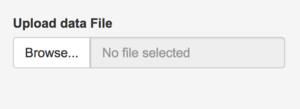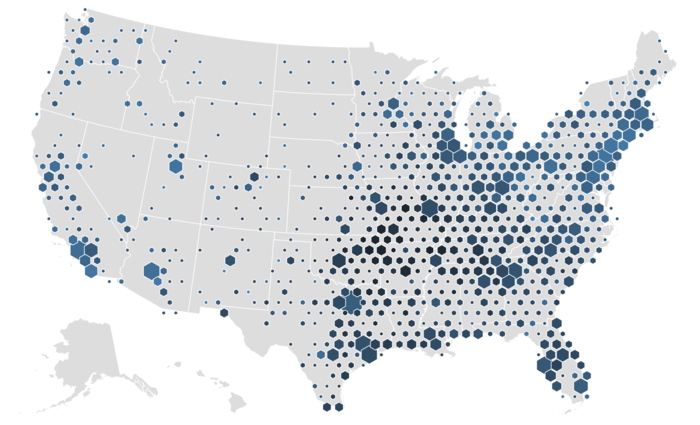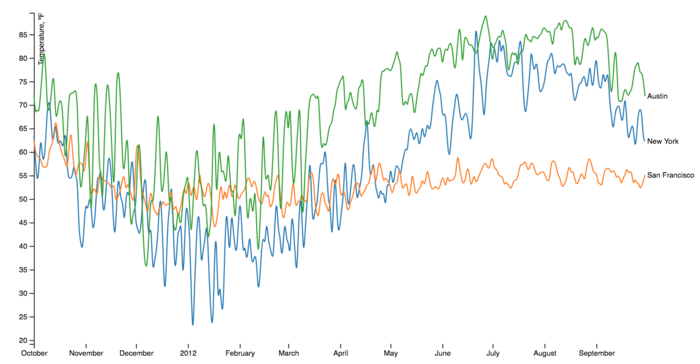Difference between revisions of "1718t1is428T15"
| Line 16: | Line 16: | ||
[[File:1718t1is428T15-StoryboardHexBin.png|700px|center]] | [[File:1718t1is428T15-StoryboardHexBin.png|700px|center]] | ||
| + | <i>Example of hexbin by [https://bl.ocks.org/mbostock/4330486 Mike Bostock]</i> | ||
There are many levels that we can consider when thinking of how to analyze the intensity of energy consumption in Singapore, such as on a national level, regional level, or subzone level. But these levels are too coarse and does not provide a comprehensive view - for instance, a large subzone would surely have a higher energy consumption level since there are more residents living in it. | There are many levels that we can consider when thinking of how to analyze the intensity of energy consumption in Singapore, such as on a national level, regional level, or subzone level. But these levels are too coarse and does not provide a comprehensive view - for instance, a large subzone would surely have a higher energy consumption level since there are more residents living in it. | ||
| Line 21: | Line 22: | ||
Thus, to properly analyze the intensity of energy consumption in Singapore, we need to do so on a more granular level; We decide to break down Singapore into various groups of postal codes. By aggregating a few postal codes together, we have a higher chance of uncovering new findings. | Thus, to properly analyze the intensity of energy consumption in Singapore, we need to do so on a more granular level; We decide to break down Singapore into various groups of postal codes. By aggregating a few postal codes together, we have a higher chance of uncovering new findings. | ||
| − | The best way to visualize this would be to plot hexagonal bins (“hexbin”) onto the Singapore map, with each hexbin representing a group of postal codes, and using a gradient colour scheme to represent each group’s energy consumption intensity. | + | The best way to visualize this would be to plot hexagonal bins (“hexbin”) onto the Singapore map, with each hexbin representing a group of postal codes, and using a gradient colour scheme to represent each group’s energy consumption intensity. |
=== Line Chart === | === Line Chart === | ||
Revision as of 16:26, 3 November 2017
Proposed Storyboard
Upload Data
A UI will be provided for the user to upload datasets of past and/or future years. This would provide more flexibility for users to analyze a wider range of energy usage data.
Filters
…
Hexagonal Binning
Example of hexbin by Mike Bostock
There are many levels that we can consider when thinking of how to analyze the intensity of energy consumption in Singapore, such as on a national level, regional level, or subzone level. But these levels are too coarse and does not provide a comprehensive view - for instance, a large subzone would surely have a higher energy consumption level since there are more residents living in it.
Thus, to properly analyze the intensity of energy consumption in Singapore, we need to do so on a more granular level; We decide to break down Singapore into various groups of postal codes. By aggregating a few postal codes together, we have a higher chance of uncovering new findings.
The best way to visualize this would be to plot hexagonal bins (“hexbin”) onto the Singapore map, with each hexbin representing a group of postal codes, and using a gradient colour scheme to represent each group’s energy consumption intensity.
Line Chart
We will add in a multi-series line chart to allow users to compare the monthly energy consumption levels by: 1) entire Singapore, 2) a group of postal codes, and 3) each postal code.


